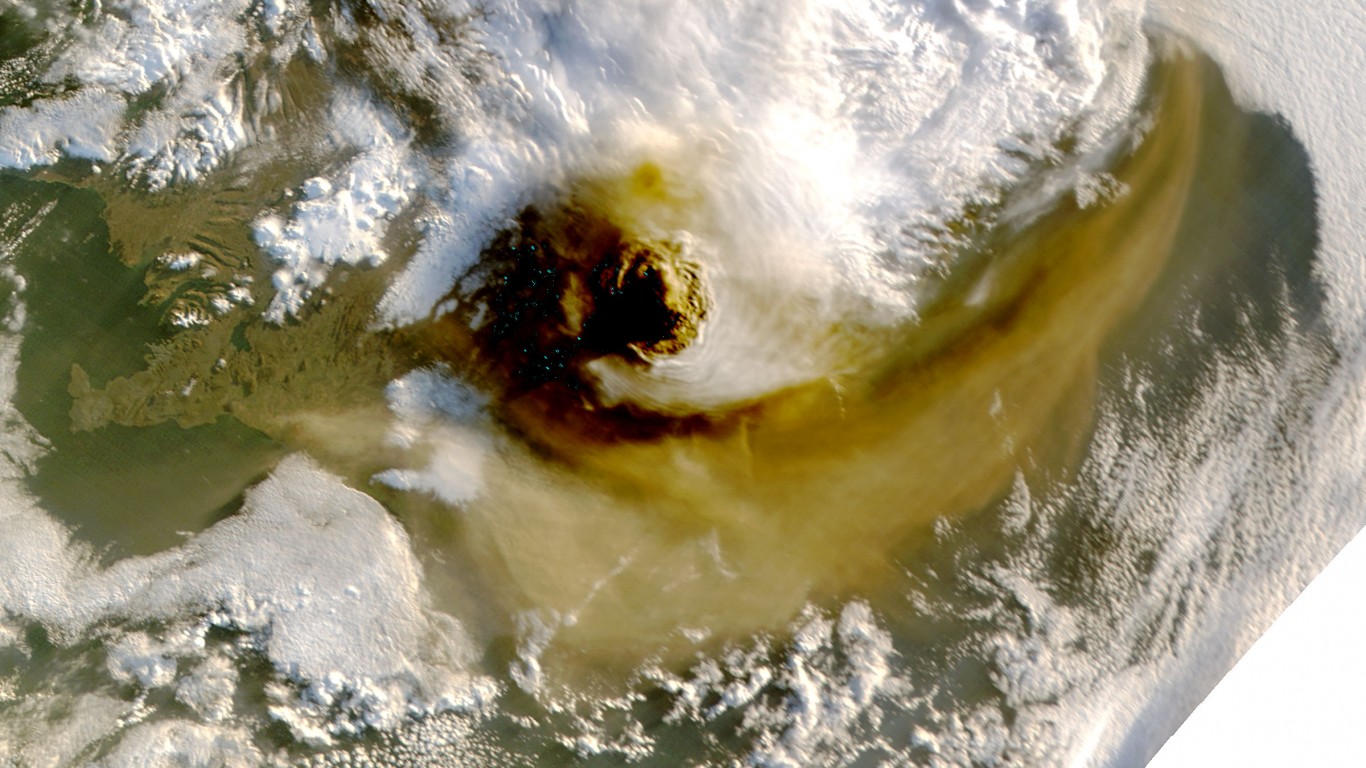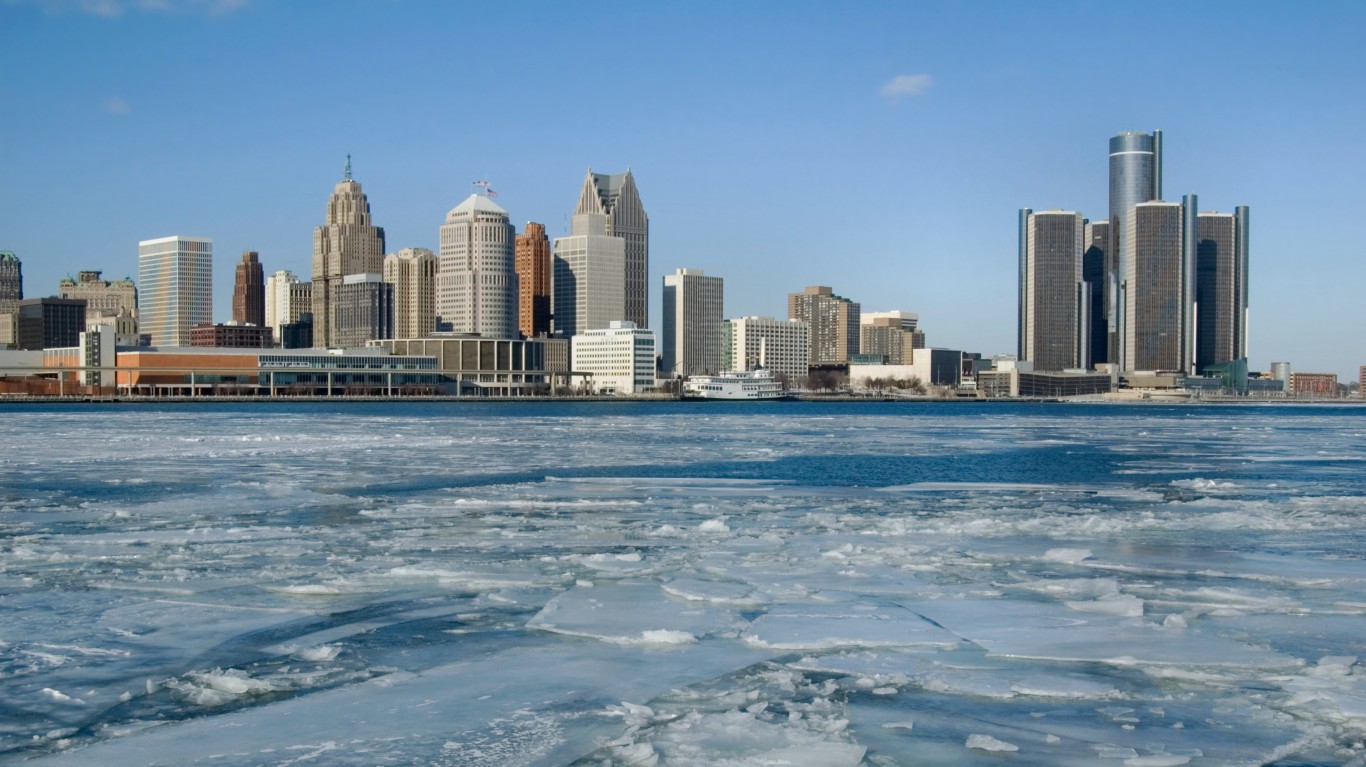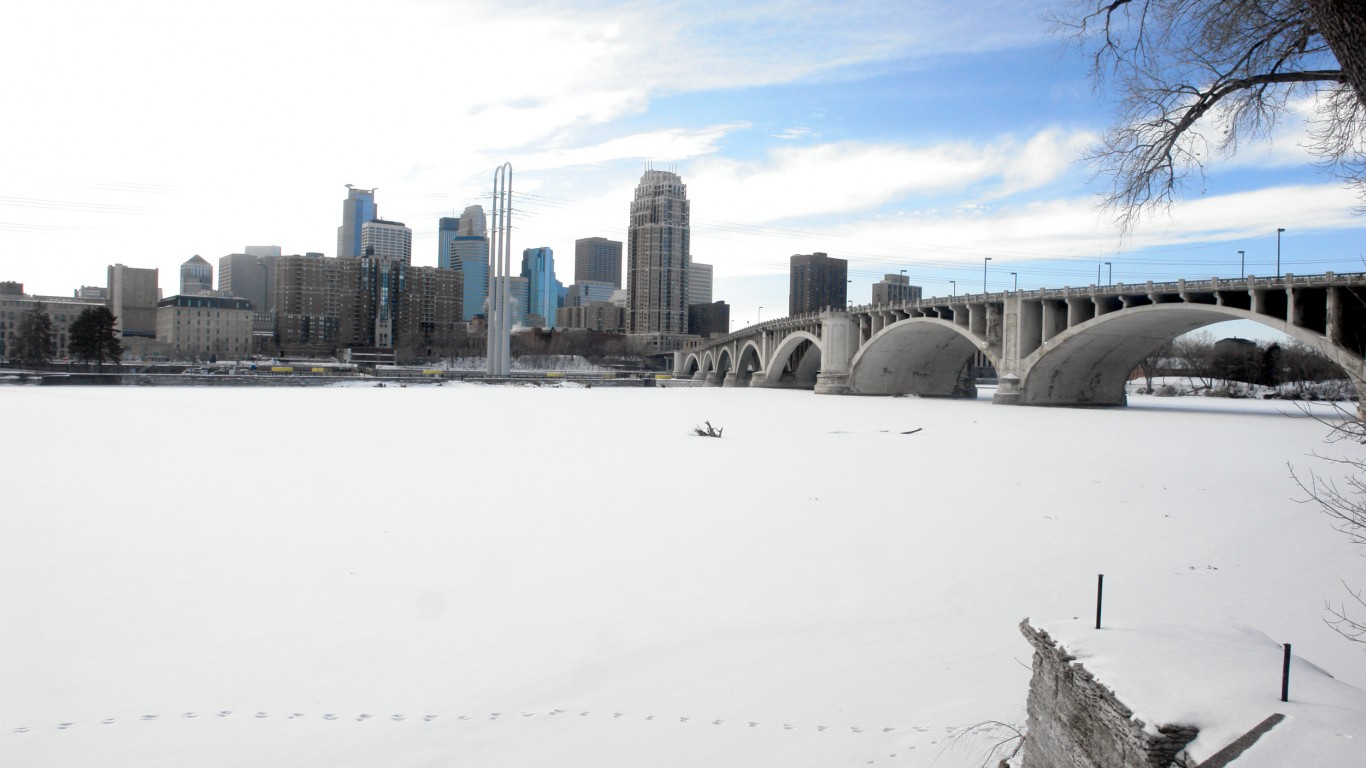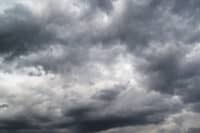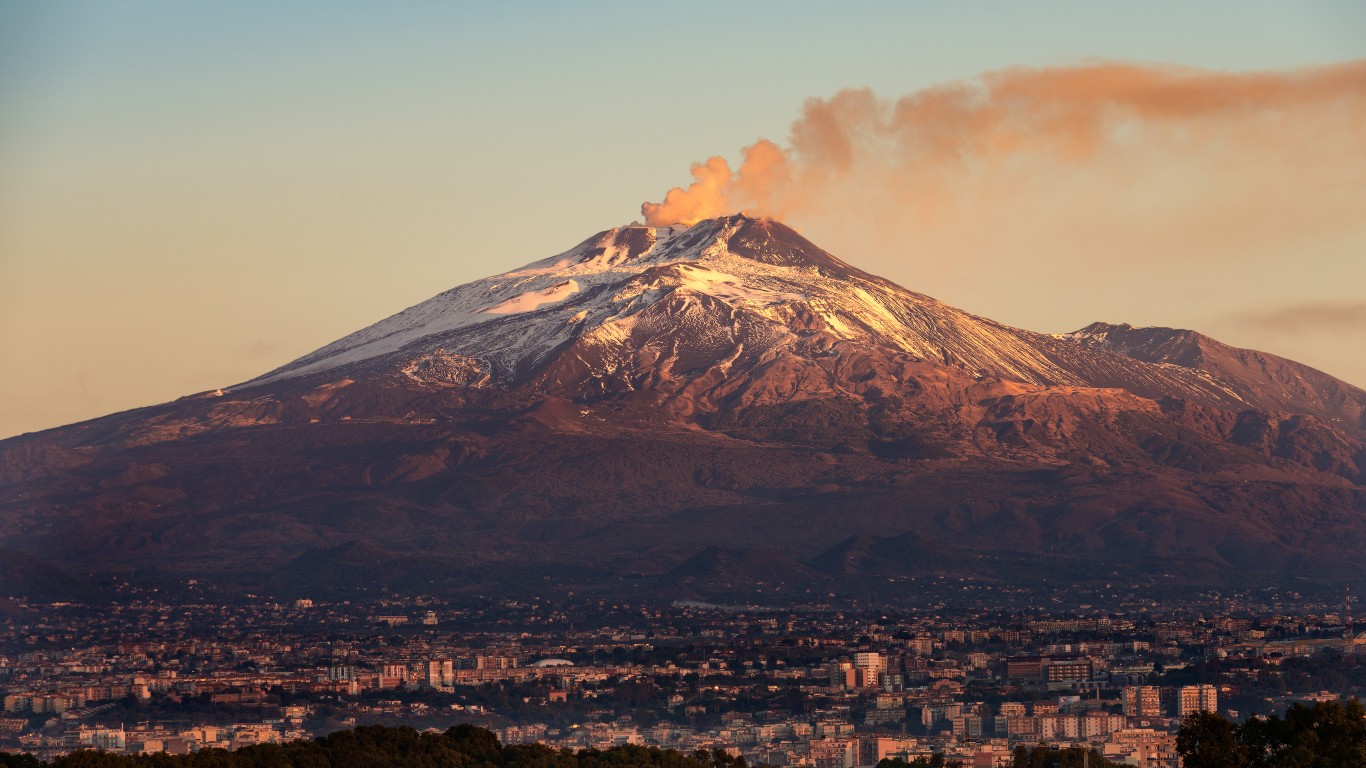
Volcanoes are responsible for some of the most devastating and dramatic natural disasters in history. Massive eruptions have created explosions more powerful than nuclear bombs and scattered ash around the globe. Sometimes there’s so much ash that it blocks out the sun and temporarily alters the global climate.
Eruptions can also reshape mountains, create lakes, build islands, and more. No wonder people in earlier times used to think that they were expressions of divine rage. (These are the most devastating volcanic eruptions in history.)
Volcanoes are ruptures in the earth’s crust, normally found where tectonic plates converge and diverge, that spew out lava, volcanic ash, and gases. Many exist in the ocean.
Scientists have different ways of classifying types of volcanoes. In the list below, we use the terms specified by our source material. Briefly, a stratovolcano (or composite volcano) is a steep symmetrical cone built of lava flows, volcanic ash, and other materials (some of the world’s highest mountains are stratovolcanoes). A lava dome is a comparatively small volcano built from dense lava flow.
A caldera, considered particularly damaging to the surrounding environment, is a depression in the earth caused when the edges of the volcano collapse inward. A shield volcano is large and flat and composed almost entirely of lava flow; it is said to resemble a battle shield in shape. A pyroclastic shield is similar in form but formed mostly from rocks rather than fluid lava.
Click here to see the most dangerous volcanoes on the planet
Not all volcanic eruptions are the same. Some are fairly calm and pose little threat to nearby inhabitants. Others can be violent, with catastrophic effects. Smaller volcanic events can be spectacular to witness from a safe distance and many active volcanoes release dazzling lava without massive violent eruptions. Others, though, continue to pose major threats to cities around the world, even if they’ve previously erupted. (These are ancient civilizations destroyed by natural disasters.)
To identify the most dangerous volcanoes on the planet, 24/7 Wall St. reviewed data from the National Museum of Natural History’s Global Volcanism Program. Each volcano on the list meets at least three of the following criteria: at least one major eruption, multiple large eruptions, high fatality eruption, frequent activity, or significant lava effusion.
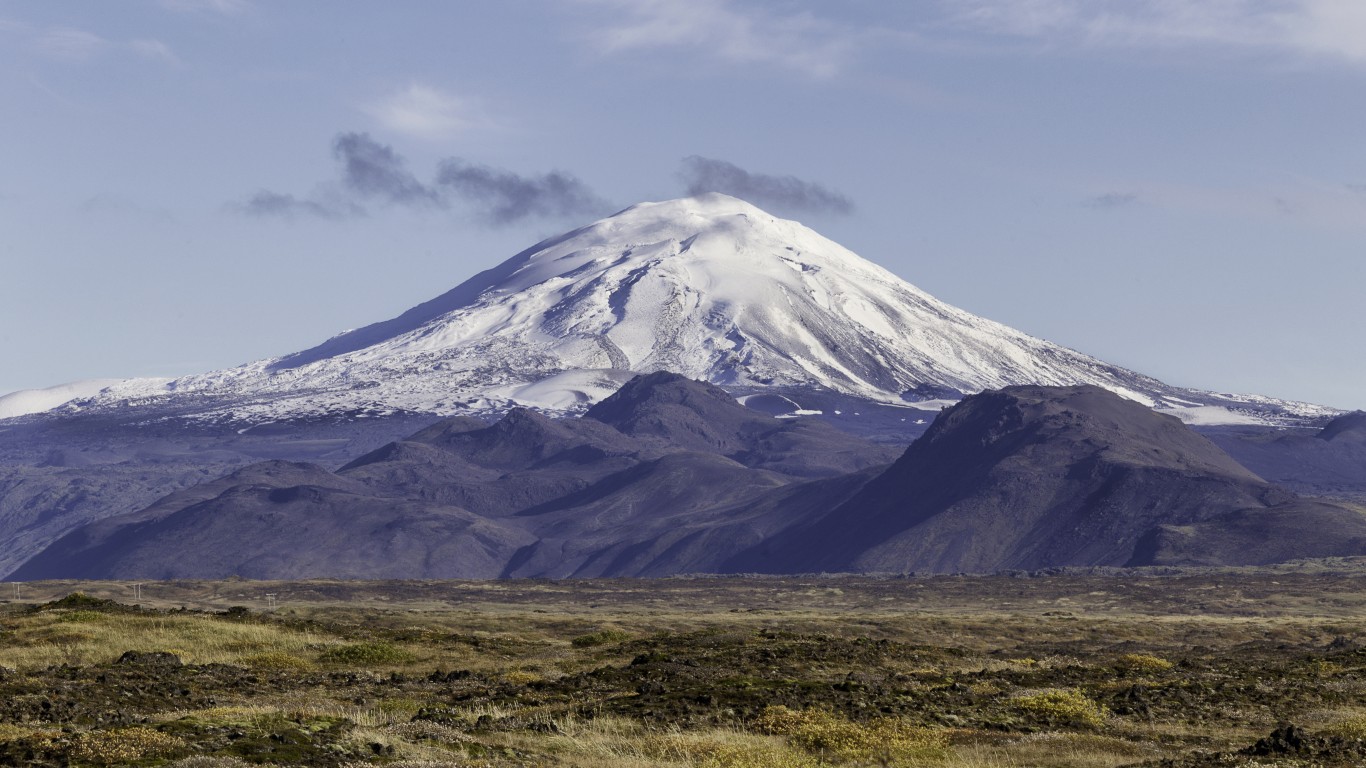
12. Hekla
> Type of volcano: Stratovolcano
> Location: Iceland
> Criteria: Multiple large eruptions, high fatality eruption, significant lava effusion
Iceland is often called the Land of Fire and Ice. Technically the only part of the Mid-Atlantic ridge that breaks above the ocean’s surface, it is covered in active volcanoes and other geothermal features. Hekla is a stratovolcano, also known as a composite volcano. It’s part of a 25 mile-long volcanic ridge and has multiple active craters. It is known to have erupted more than 20 times over the past 2,000 years and continues to spray tephra (ejected rock particles) around Iceland and beyond.
[in-text-ad]
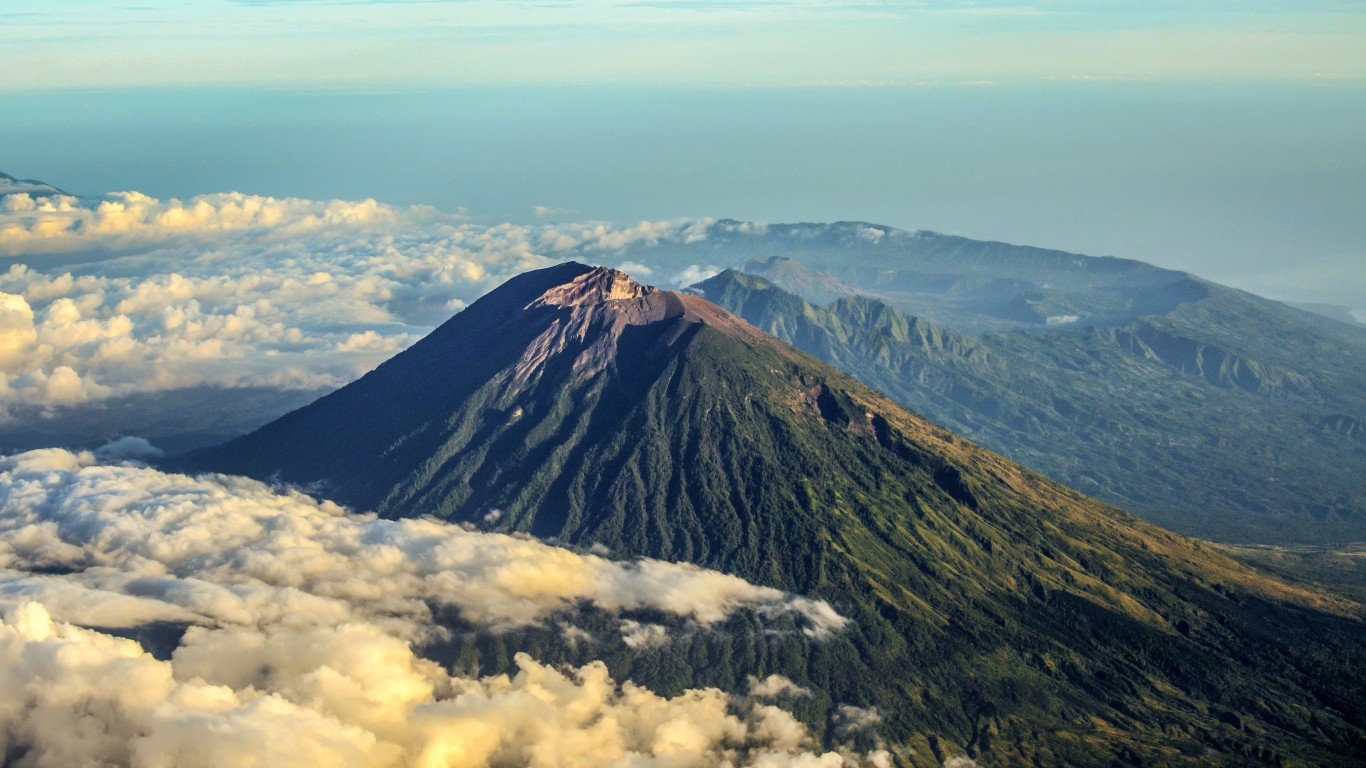
11. Agung
> Type of volcano: Stratovolcano
> Location: Indonesia
> Criteria: Multiple large eruptions, high fatality eruption, significant lava effusion
Mount Agung, on the Indonesian island of Bali, and is currently active. It is the highest point on the island and, most recently, has erupted several times between 2017 and 2019. Volcanic earthquakes were observed leading up to the eruptions and nearby homes were evacuated before the event. After a considerable number of earthquakes, the volcano began to erupt and spew ash into the air, disrupting air traffic. Pyroclastic debris flows (composed of gasses, ash, and rocks) were spotted coming off the mountain, but no one was hurt, as they’d already been evacuated.
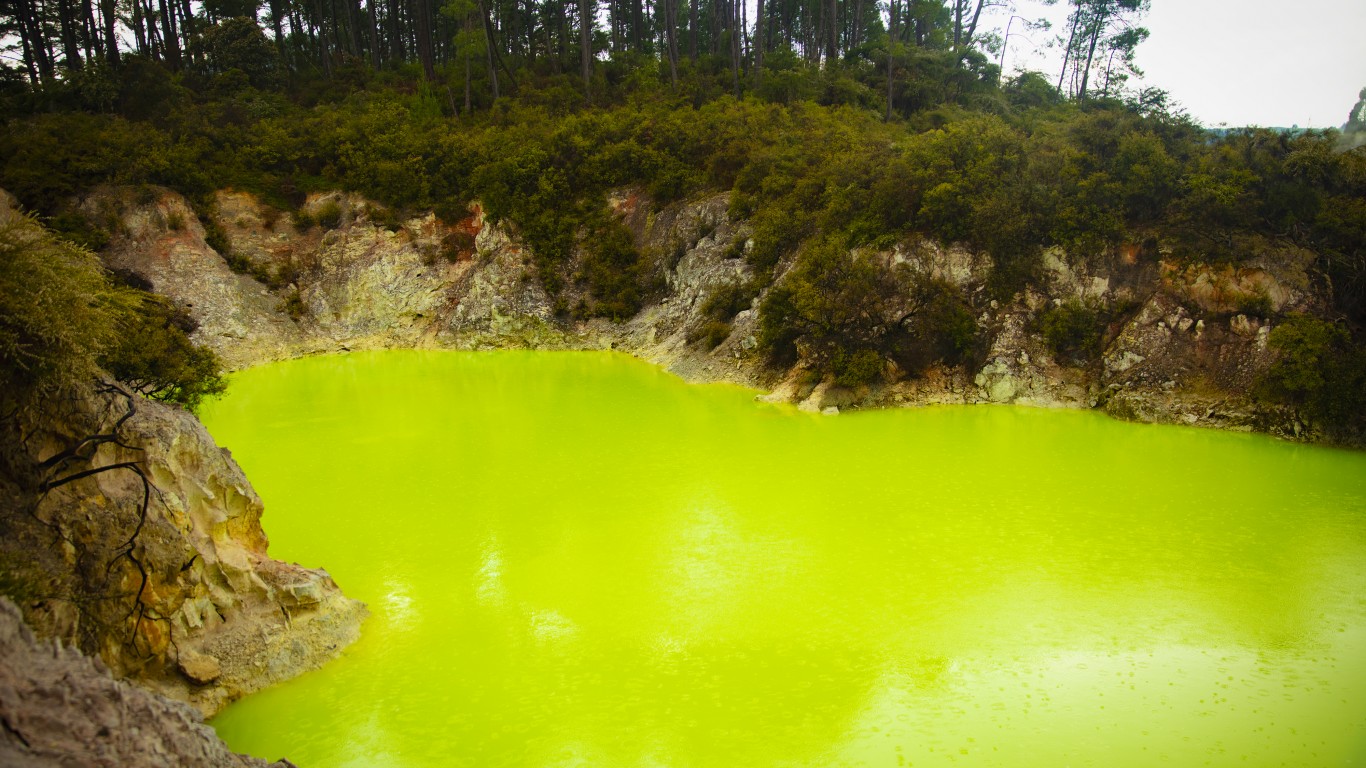
10. Okataina
> Type of volcano: Lava dome(s)
> Location: New Zealand
> Criteria: Multiple large eruptions, high fatality eruption, significant lava effusion
The Okataina volcanic center on New Zealand’s North Island is an area that has multiple recently active volcanic vents. The center includes several large volcanoes that experts believe will erupt again. All three of the peaks of one of the volcanoes, Mount Tarawera, exploded in 1886. The nearby area was sparsely populated but the explosions still killed over 100 people in a nearly four-mile radius. The area has not had any major eruptions since 1886 but the center is still considered active.

9. Etna
> Type of volcano: Stratovolcano(es)
> Location: Italy
> Criteria: Multiple large eruptions, frequent activity, significant lava effusion
Mount Etna, on Sicily’s eastern coast, is one of the tallest active volcanoes in Europe. It lies in the area where the Eurasian and African tectonic plates meet. It has been almost continuously active at least since ancient times — according to Greek mythology, an ancient monster was said to be trapped inside it — and has had six summit eruptions and four flank eruptions in the past 20 years alone. Few people have been recorded killed by Etna over the years, but it has destroyed several nearby towns.
[in-text-ad-2]
8. Grímsvötn
> Type of volcano: Caldera
> Location: Iceland
> Criteria: Major eruption, high fatality eruption, significant lava effusion
Grímsvötn has erupted more often than any other volcano in Iceland. It is situated under a glacier, and the reactions between lava and meltwater under the glacier can cause violent explosions. These explosions and other activity can lead to glacial bursts — sudden powerful floods affecting nearby areas. Eruptions from the volcano in 2011 spewed ash into the air and disrupted some European air traffic. The Icelandic Meteorological Office has warned that another eruption might be imminent.
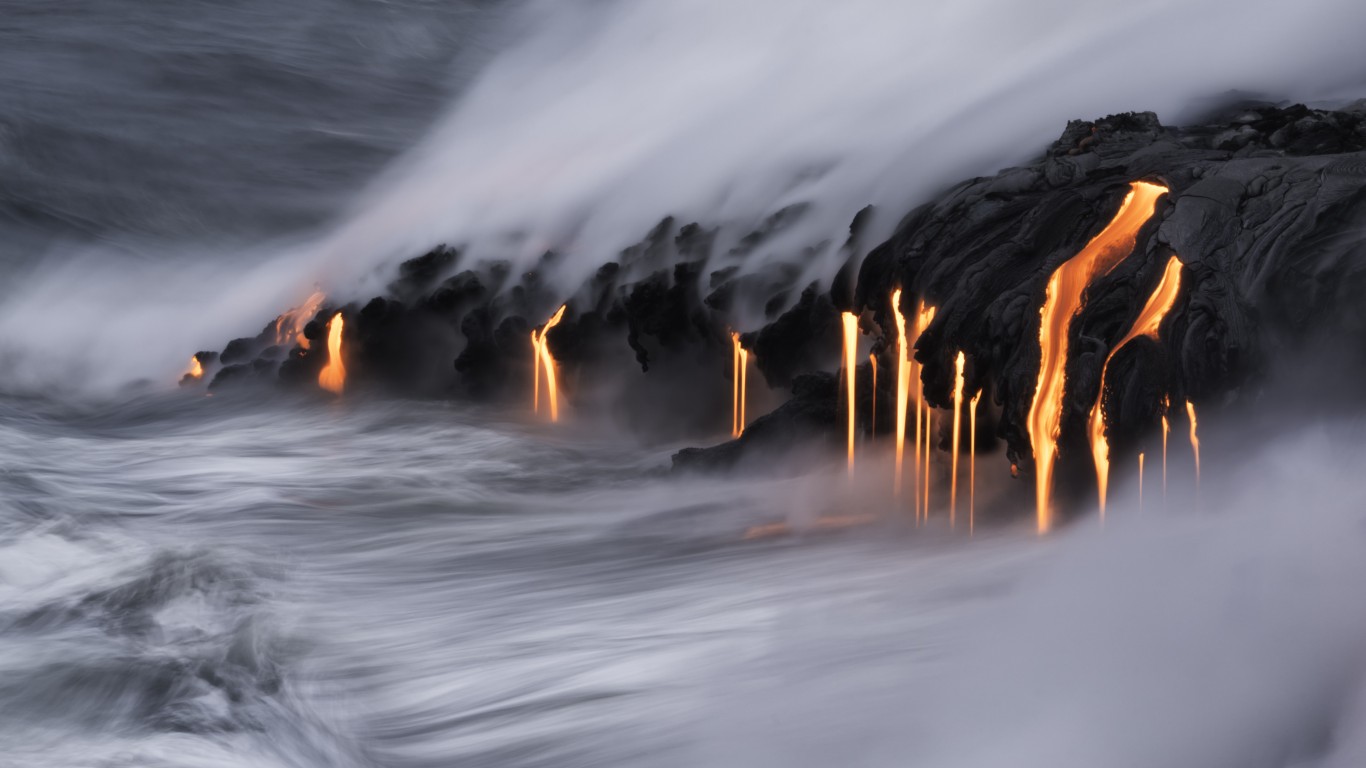
7. Kilauea
> Type of volcano: Shield
> Location: Hawaii, USA
> Criteria: High fatality eruption, frequent activity, significant lava effusion
Kilauea is a shield volcano on the Big Island of Hawai’i, one of many in the archipelago that are active today. Kilauea has been active in several different ways. From 2008 to 2018 its crater had an active lava lake and there were near constant eruptions from vents on its eastern side. In 2018, activity shifted to a different part of the volcano and destroyed several nearby towns.
[in-text-ad]
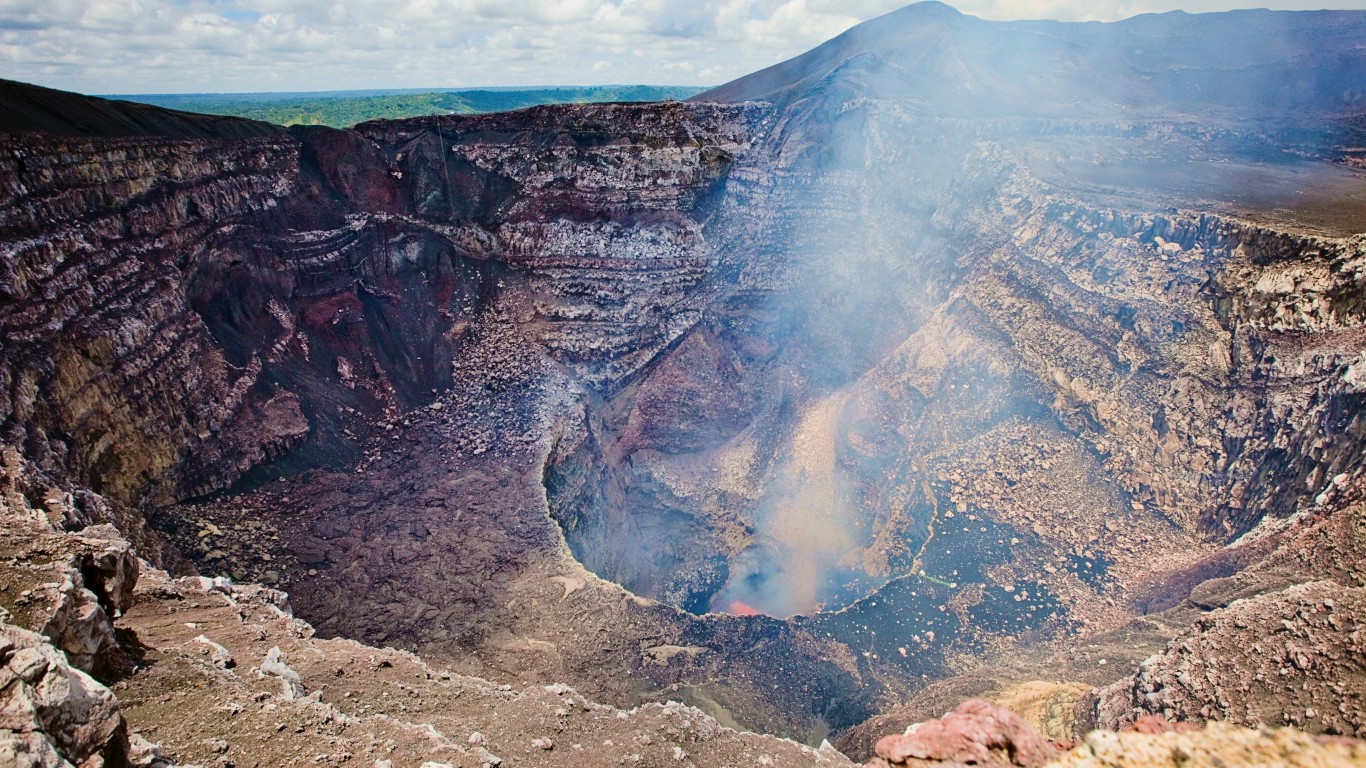
6. Masaya
> Type of volcano: Caldera
> Location: Nicaragua
> Criteria: Major eruption, multiple large eruptions, frequent activity,
Masaya Volcano lies a little more than 10 miles from the outskirts of Managua, Nicaragua’s capital. It is a complex volcano made up of several nested calderas and craters. In the last 20 years, several smaller explosions have sent debris flying from the volcano, causing damage to nearby cars and structures. The volcano remains active but has mostly just let off volcanic gases and had several small explosions in recent years. In 2020, daredevil Nik Wallenda walked on a steel cable over one of the volcano’s calderas.
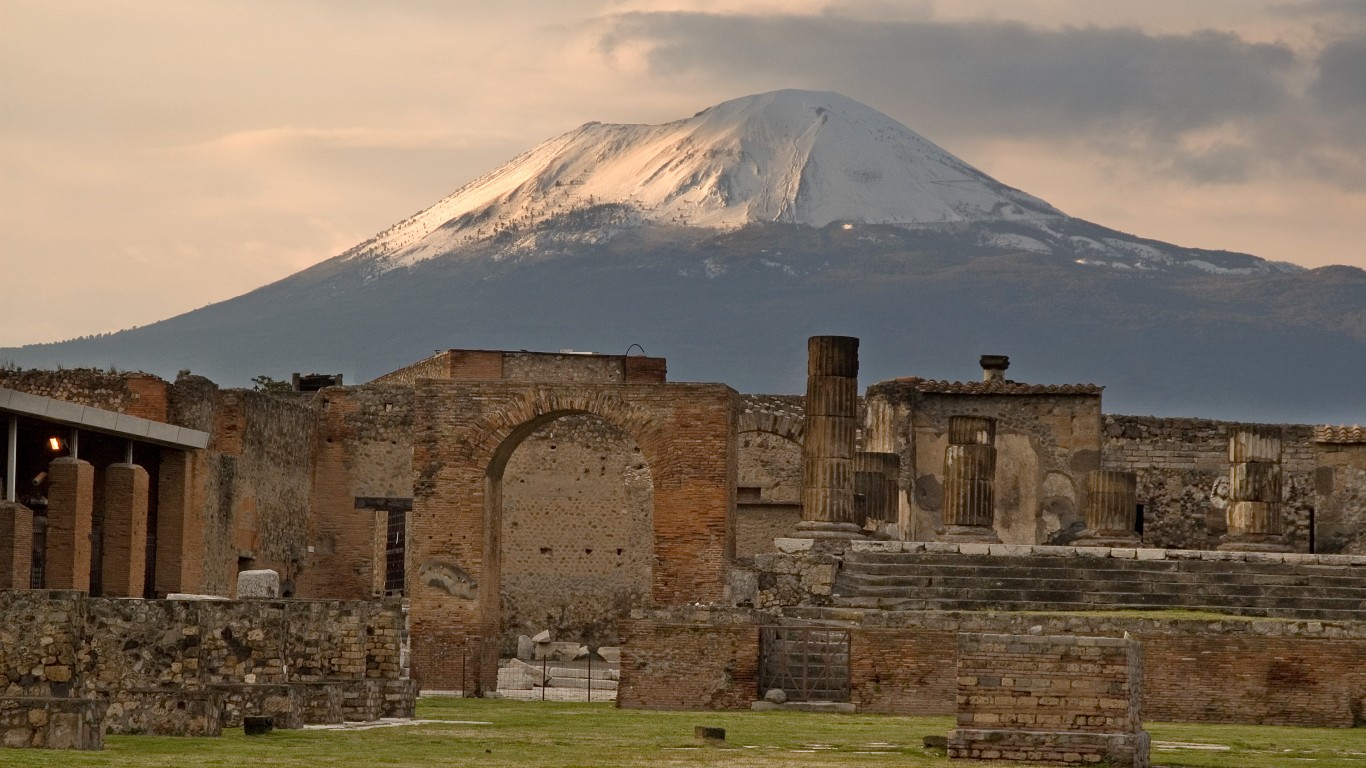
5. Vesuvius
> Type of volcano: Stratovolcano
> Location: Italy
> Criteria: Multiple large eruptions, high fatality eruption, frequent activity,
The eruption of Vesuvius and subsequent destruction of Pompeii is perhaps the most famous historical account of volcanic destruction. In the year 79, the mountain was ripped open by an explosion more powerful than that caused by some atomic weapons. Pompeii, along with several other cities, was rapidly buried under pyroclastic surges and ash. The speed of the event left many victims preserved as they had been moments before the eruption. The volcano continues to wreak havoc and is considered extremely dangerous because of the large population in nearby Naples and other settlements.
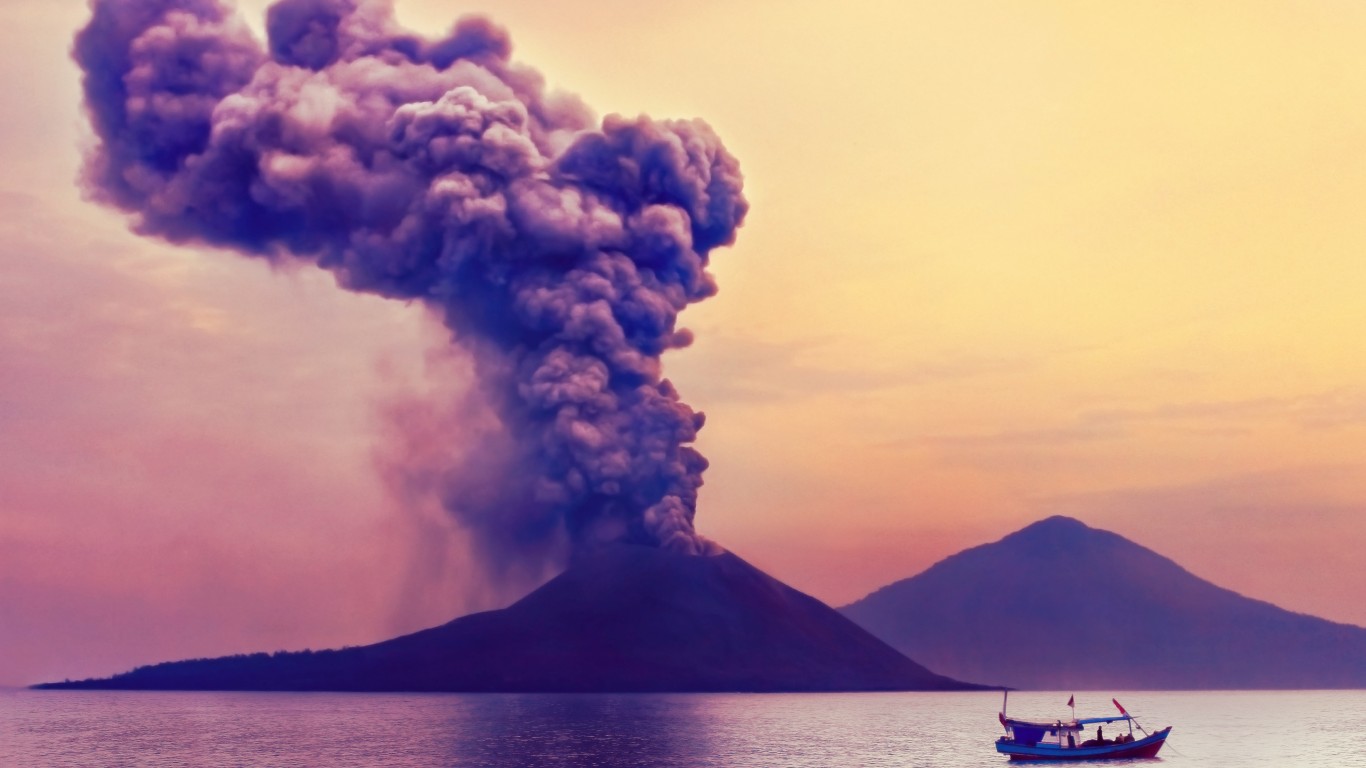
4. Krakatau
> Type of volcano: Caldera
> Location: Indonesia
> Criteria: Major eruption, high fatality eruption, frequent activity,
Krakatau — also called Krakatoa — is a caldera volcano in the Sunda Strait between the islands of Java and Sumatra, part of the Krakatau Archipelago. The volcano is famous for a violent eruption in 1883 so powerful that it was heard as far away as New Zealand and western Australia. The eruption and the ensuing tsunamis caused massive destruction and reportedly killed over 35,000 people in the region. (a 1968 movie about the eruption, “Krakatoa, East of Java,” had geographers scratching their heads: Krakatoa is actually west of Java.) The volcano remains active, with smaller eruptions throughout the 2010s.
[in-text-ad-2]
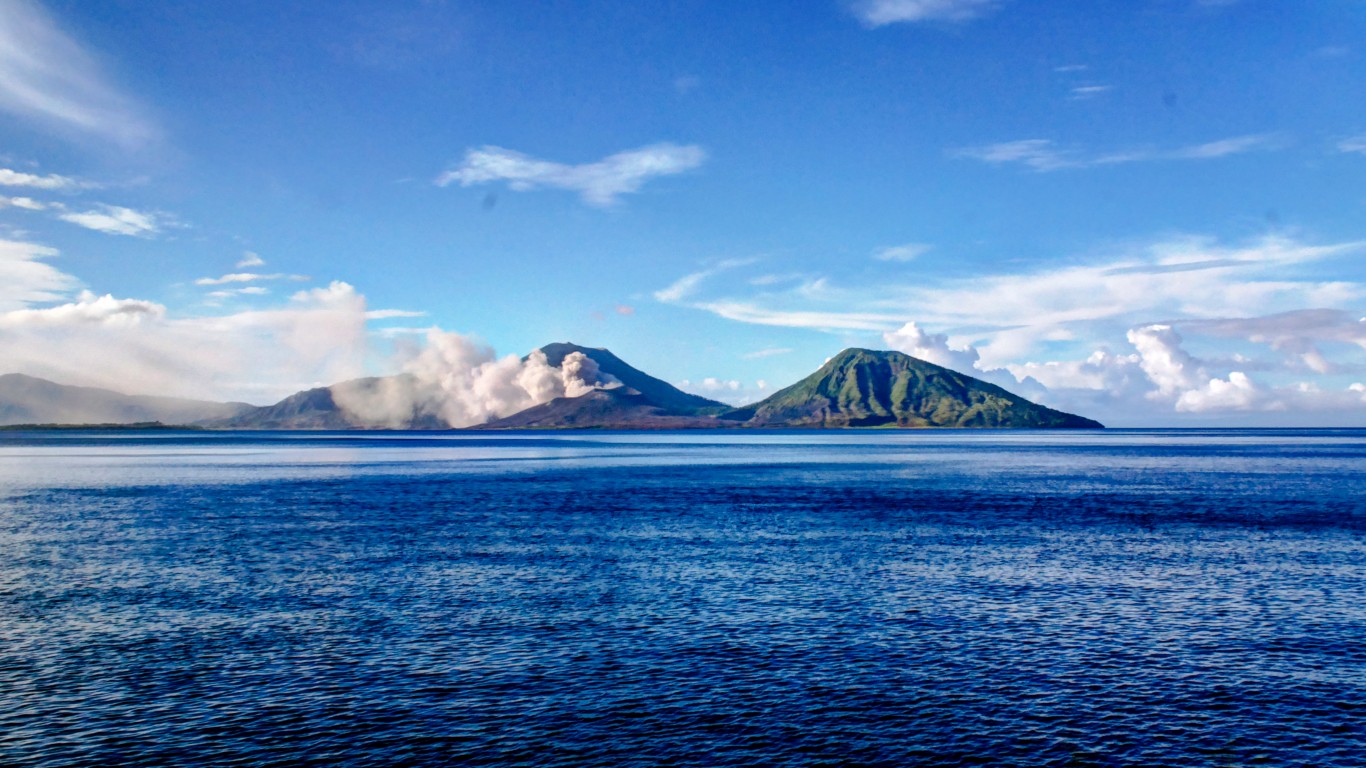
3. Rabaul
> Type of volcano: Pyroclastic shield
> Location: Papua New Guinea
> Criteria: Major eruption, high fatality eruption, frequent activitity
The town of Rabaul is built on a bay, surrounded by rising hills. While this may look like a protective place for a settlement, the bay is actually the bowl of the Rabaul volcano. The town was decimated by an eruption in 1994 that sent ash falling throughout the harbor and destroyed a large number of structures. The town remains inhabited and has been partially rebuilt but is considered to be in danger of being destroyed by future volcanic activity.
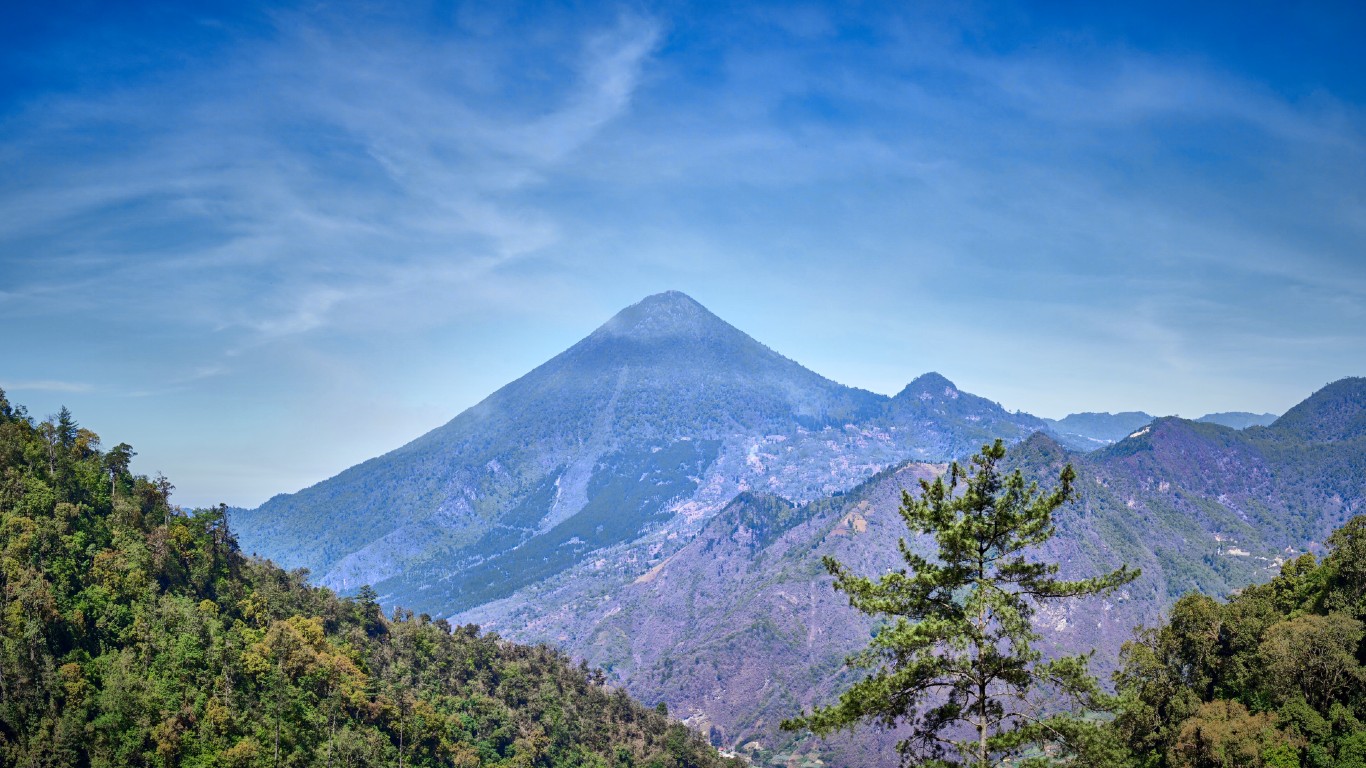
2. Santa Maria
> Type of volcano: Stratovolcano
> Location: Guatemala
> Criteria: Major eruption, high fatality eruption, frequent activity, significant lava effusion
Santa Maria erupted massively in 1902 for the first time in recorded history. The event was one of the three largest eruptions of the 20th century, killing more than 6,000 people. Locals didn’t recognize the signs of an impending eruption since the volcano hadn’t previously been known to be active. A smaller volcanic event in 1929 produced deadly pyroclastic flows, and it has continued to see less violent activity in recent years, including lava flows.
[in-text-ad]
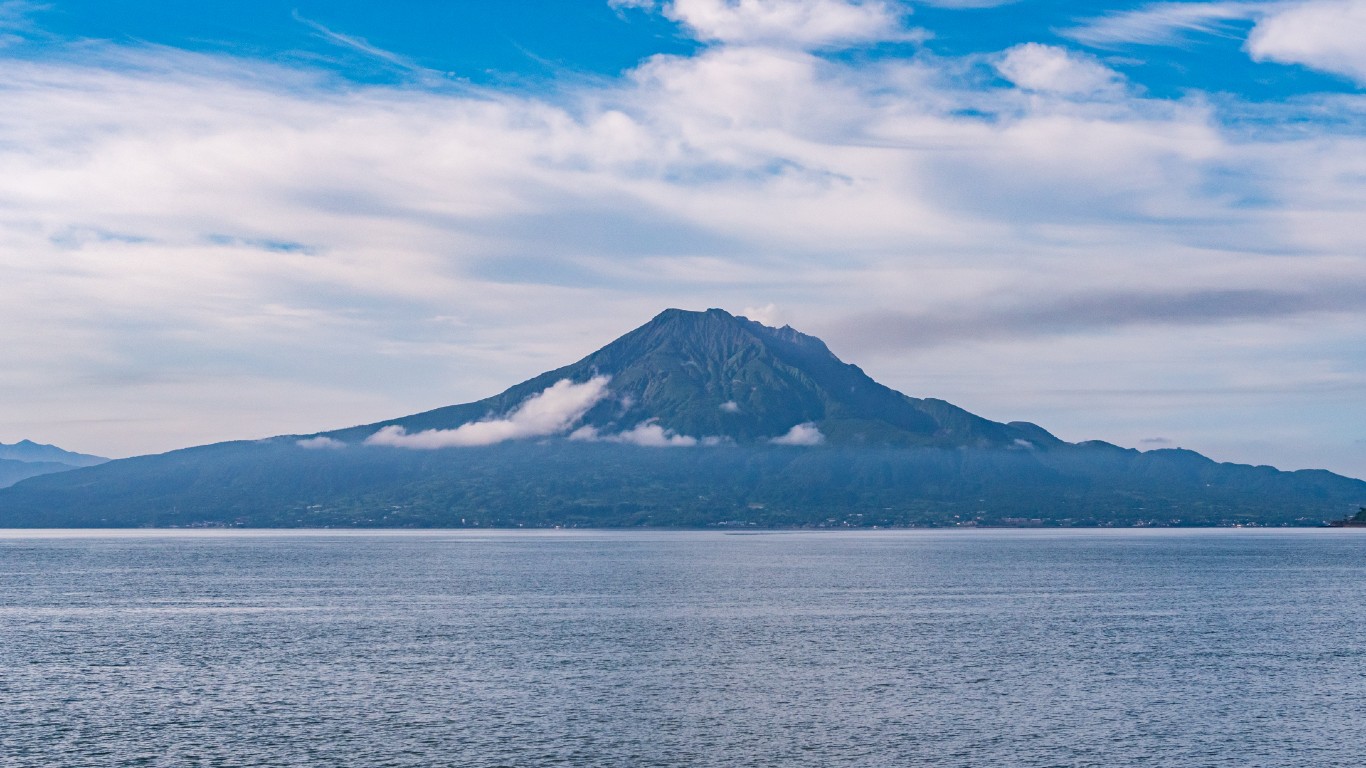
1. Aira
> Type of volcano: Caldera
> Location: Japan
> Criteria: Major eruption, multiple large eruptions, high fatality eruption, frequently activity, significant lava effusion
Aira is a massive caldera on the southern end of Japan’s Kyushu island. Currently, the city of Kagoshima, situated in the middle of the caldera that forms a scenic bay, is home to over 900,000 people. Japan’s most active caldera, Aira sees several small eruptions every year. Mindful of their precarious position, residents have put in place one of the most advanced seismologic monitoring systems in the world. They are also well-trained in evacuation procedures.
The Average American Has No Idea How Much Money You Can Make Today (Sponsor)
The last few years made people forget how much banks and CD’s can pay. Meanwhile, interest rates have spiked and many can afford to pay you much more, but most are keeping yields low and hoping you won’t notice.
But there is good news. To win qualified customers, some accounts are paying almost 10x the national average! That’s an incredible way to keep your money safe and earn more at the same time. Our top pick for high yield savings accounts includes other benefits as well. You can earn up to 3.80% with a Checking & Savings Account today Sign up and get up to $300 with direct deposit. No account fees. FDIC Insured.
Click here to see how much more you could be earning on your savings today. It takes just a few minutes to open an account to make your money work for you.
Our top pick for high yield savings accounts includes other benefits as well. You can earn up to 4.00% with a Checking & Savings Account from Sofi. Sign up and get up to $300 with direct deposit. No account fees. FDIC Insured.
Thank you for reading! Have some feedback for us?
Contact the 24/7 Wall St. editorial team.
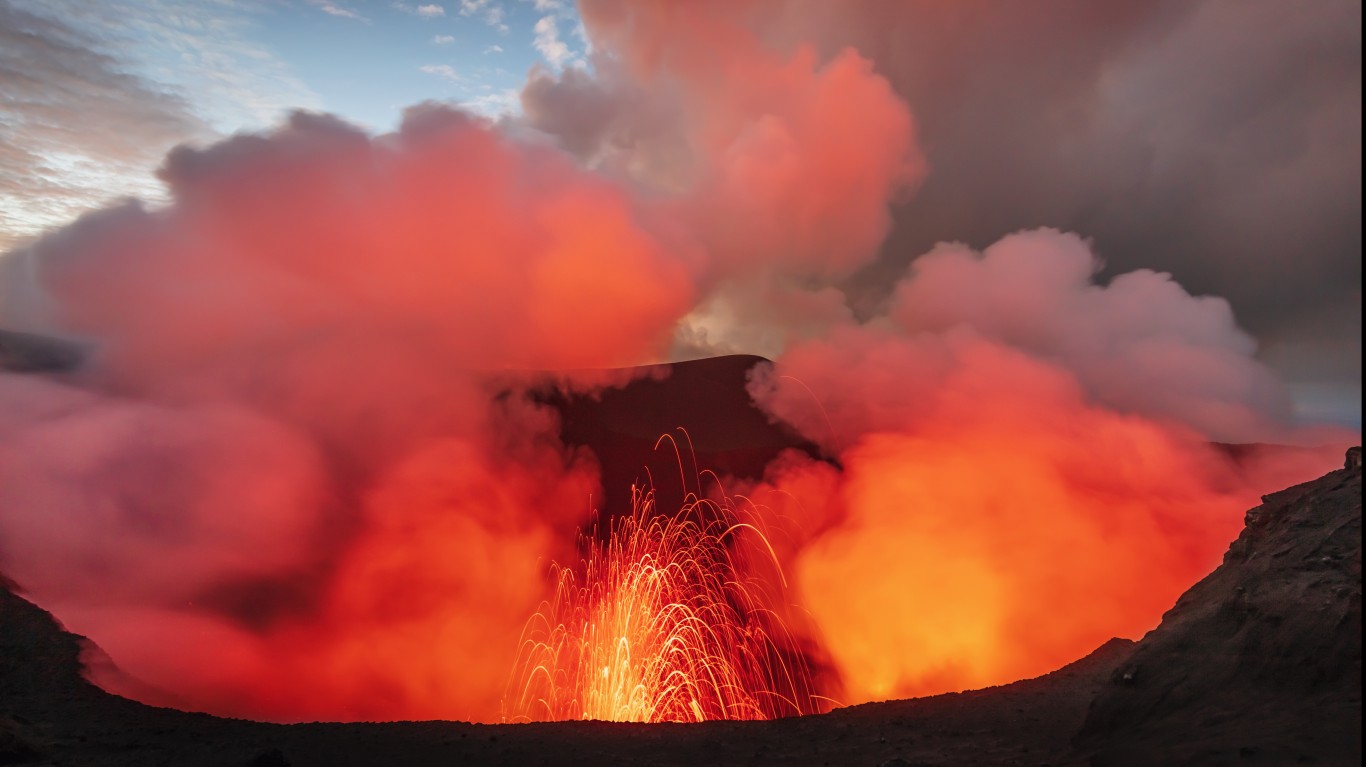 24/7 Wall St.
24/7 Wall St.